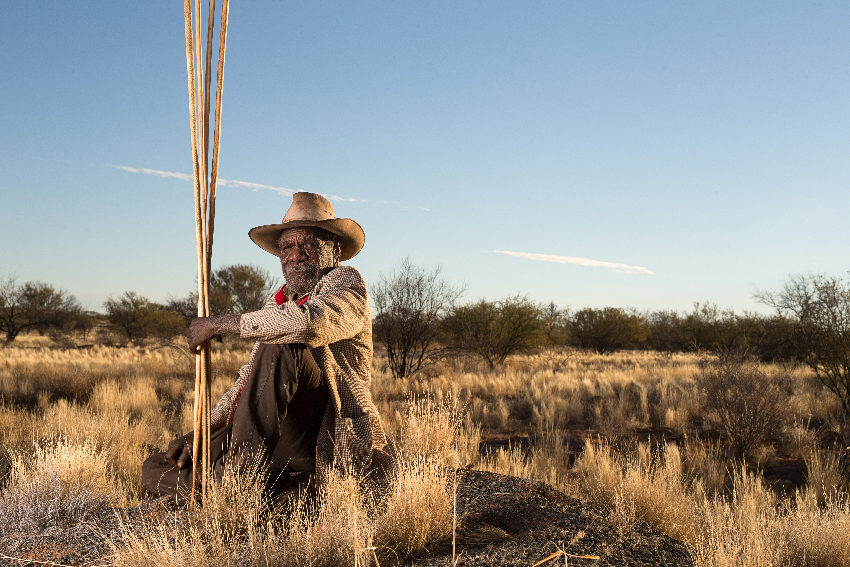'Every spear is important': TARNANTHI's Kulata Tjuta exhibition

The story of Kulata Tjuta Project takes a dramatic twist in TARNANTHI 2017 with a remarkable installation at the Art Gallery of South Australia about the Maralinga atomic testing program and generations of people caught in the blast. John Neylon recently travelled to the APY Lands to meet the artists and to hear their stories.
“Every spear is important.” This is Peter Mungkuri speaking. He is one of the senior men associated with the Kulata Tjuta Project. He reminds us that re-establishing the practice of spear-making is far more than maintaining tradition for its own sake, or the art market.
The Project was formally established in 2010 at Tjala Arts in the Amata by a number of senior men as a means of cultural maintenance, teaching young Community men the skills of carving (wood) and (spear) production.
Interest and participation in the Project has continued to grow, as witnessed by the fact that within TARNANTHI 2017, the Art Gallery of South Australia will present an installation, Kulata Tjuta (Many Spears), which incorporates spears produced by a cross-generational body of men from each of the art centres across the Anangu Pitjantjatjara Yankunytjatjara (APY) Lands.

Key features of the Project are that it is driven by the APY communities and is envisaged as a long-term process with the potential to extrapolate across a wide diversity of media and expressive styles. In 2012, for example, Jonathan Jones, a Wiradjuri/Kamilaroi artist with extensive experience in site-specific installation, was invited by the senior men to work on the Project.
The results were dramatically evident in Dark Heart, the Art Gallery of South Australia’s 2014 Adelaide Biennial of Australian Art, where hundreds of kulata were suspended from the ceiling, accompanied by a sound work that included the voices of the older men singing and the distinctive sounds (Tirkilpa) of the rolling of spears in preparation for battle. To stand under this bristling cloud of spearheads was to get some sense of what is at stake – the renewal or breakdown of culture – everything.

From every aspect this installation represents a significant step in taking the central concepts associated with Project to a whole new level. It is a manifestation of the artist-led approach that has always been embedded in the Project but now sees the APY communities conceiving the central ideas, collaborating with each other to an unprecedented degree and acquiring skills in using the resources from elsewhere to realise the work.
It is also a very ambitious installation, the result of considered planning, which included the construction by the artists of a scale model, to help envisage how the final work would be staged within the gallery spaces. It is also most ambitious in terms of the level of negotiation required to bring groups of men and women together to tell their stories. And stories, as TARNANTHI artistic director Nici Cumpston says, are everything. Only now do many individuals and families, devastated by the Maralinga atomic weapon testing of the 1950s, and its legacy, feel that their stories can be safely and properly told.

These stories, and the role that this installation has in sharing them, is summarised by one of the artists, Willy Kaika: “With this artwork we say a prayer for the ones who were lost from the Black Mist, the bomb test at Emu Junction … We pray for all the young men and women of the Lands – we will be watching as you take your turn to care for this culture … We are with you and we are proud.”
The average life of a cloud is 10 minutes. But the poisonous clouds that rolled over Anangu Country in the 1950s, and beyond, belong to an unfinished story that generations of South Australians share. Kulata Tjuta (Many Spears) challenges all of us to reflect on history and to think about what seeks to destroy us or make us strong. It is truly a monumental work.
Kulata Tjuta (Many Spears) TARNANTHI, Festival of Contemporary Aboriginal and Torres Strait Islander Art Art Gallery of South Australia Friday, October 13 to Sunday, January 28
John Neylon travelled to the APY Lands courtesy of the Art Gallery of South Australia